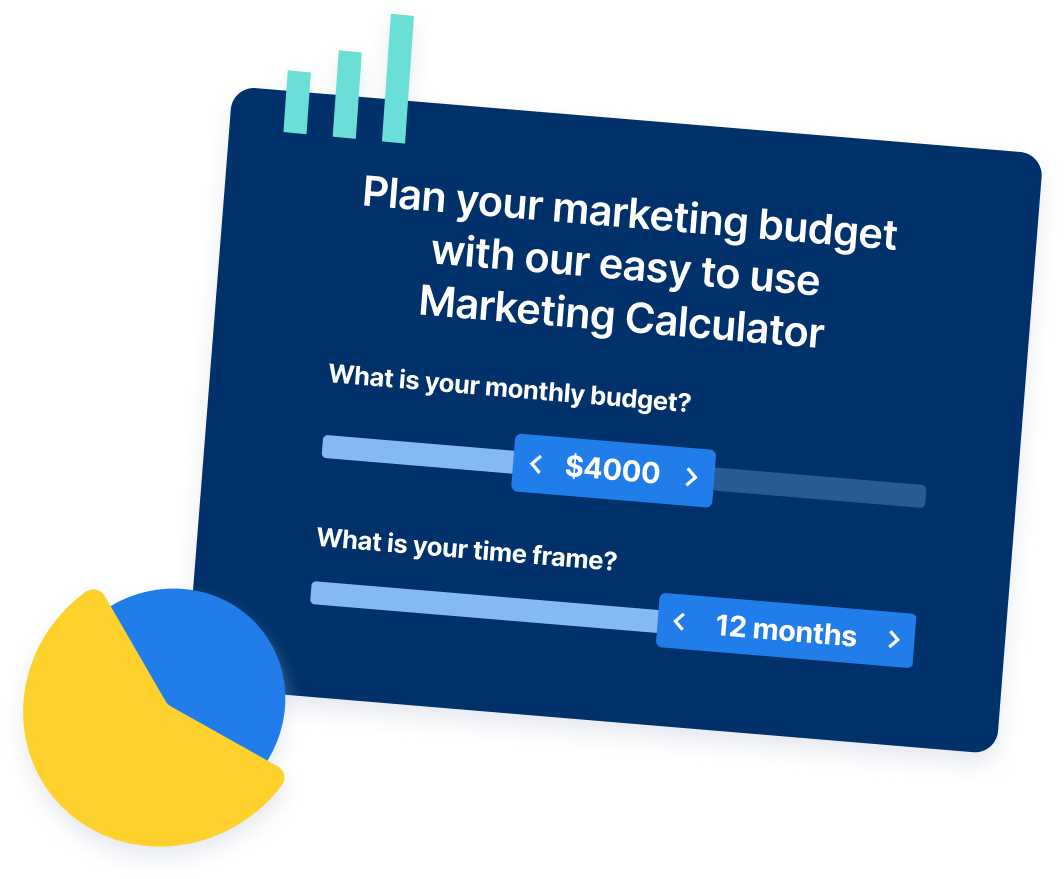- Home
- Blog
- Email Marketing How To Build Your Email Marketing Budget for 2025
How To Build Your Email Marketing Budget for 2025
-
 Published: Jan 28, 2025
Published: Jan 28, 2025
-
 5 min. read
5 min. read
-
 Abbey Stephan
Abbey Stephan Lead Editor
Lead Editor
- Abbey is a digital marketer, copywriter, and lead editor. She has worked on over 200 client campaigns and WebFX, and she specializes in marketing strategy analysis and industry-specific digital marketing plans. Outside of writing and editing, you’ll likely find her taking pictures of her cat, making a new playlist, or tending to her houseplants.
If you’re looking to invest in email marketing, the first question you might have is — “How much should I spend?” Some companies invest in elaborate email marketing plans, while others stick to newsletters and occasional promotions. And, both of them can be effective.
Creating an effective email marketing budget for 2025 can improve your return on investment (ROI) and maximize your growth. With the right planning and cost information, you can make sure you spend the ideal amount for your business while remaining competitive.
Learn how to plan your email marketing budget through the following sections:
- What is an email marketing budget?
- What factors affect your email marketing budget?
- How to budget for email marketing
- FAQ
What is an email marketing budget?
An email marketing budget is the specified amount that your company allots for your email marketing campaigns. You can have a monthly, quarterly, or even annual marketing budget.
What factors impact your email marketing budget?
Just like not every business is the same, neither are their budgets. Here are the top factors affecting your 2025 email budget:
- Company size and industry: Your budget should be relative to your business size and industry. For example, ecommerce companies invest more in email than other industries, so you might invest more to compete with other businesses.
- Your email list: The number of subscribers you have will affect your budget. Some software platforms group their pricing by the number of emails, so if you have a large subscriber list, you might spend more. You’ll also have to manage that customer data with customer relationship management (CRM) software.
- Your email marketing software: Your email marketing software will make up the bulk of your budget. This is where you will plan, send, and track your email campaign, so you’ll want to pay for a service that fits your needs.
- Email content and designs: Someone will have to write and design your emails, and you’ll have to pay them to do it (unless you do it yourself!)
- Email landing page creation: Another important cost of email marketing is the landing pages on your website. When a reader clicks on the link in your email, what page will they arrive at? These pages should be optimized for moving customers through the sales funnel.
You’ll also need to consider who will be writing, designing, and tracking your email marketing campaigns using your software. If you do it in-house, for example, you’ll pay a salary instead of just paying an agency’s fee.
How to budget for email marketing
Planning your email marketing budget for 2025 and beyond will make it easier to track your ROI. Follow these 5 steps to plan your budget for email marketing.
Read More: 2025 Marketing Budget Planning & Allocation
1. Outline your goals for email marketing
Setting goals for your email marketing will structure your budget toward a single objective. With a goal in mind, you can find the right tools and strategy and make it easier to see your progress and success.
Some example goals for email marketing could include:
- Increasing your open rate by X percent
- Earning X conversions from emails over the next six months
- Growing your subscriber list by X new additions each month
2. Determine your costs
We’ve already broken down the factors that go into an email marketing budget. Now is the time to shop around for different email marketing tools and find the one that best fits your needs. Determine whether you want to work with an agency or try email marketing out yourself!
With an agency, you can save time and salary costs on performing email marketing in-house. And, many agencies (like WebFX!) have their own email marketing software, meaning they know it inside and out and can provide direct support when you need it.
3. Set your budget
Once you have a list of costs as well as your revenue, you can set how much you want to spend on email marketing. If you are investing in other digital marketing channels, email might be a small percent of your entire digital marketing budget.
4. Track and measure your results
Once you build a budget, you should use your email marketing software to track key performance indicators (KPIs). You can look at open rate, click-through rate (CTR), and your conversion rate to see how effective your emails are at moving users to your website and through the sales funnel.
With your email software, be sure to look at specific campaigns to see which ones perform best. You can use that data to optimize for future emails and get the most out of your strategy. Above all, tracking and results will tell you how to adjust your budget to make sure you prioritize strategies that bring in the most revenue.
5. Adjust as necessary
Take time to evaluate your budget a few times a year and adjust as necessary. If you notice a certain campaign performing well, for example, you might push more revenue into that channel to increase your ROI.
Your budget is there as a guide to serve your business, so be sure to change it to fit your needs!
FAQ
Want to learn more about email marketing budgets? Our FAQ answers some related questions about email marketing costs, spending, and more!
How much does email marketing cost?
On average, the cost of email marketing is $51–$1,000 per month. The amount you will pay depends on your available resources and goals.
How much should I spend on email marketing for 2025?
Based on our research, you should budget $600-$12,000 per year on email marketing. This figure should encompass your email marketing tool, any agency costs, and other expenses for email marketing.
What is the 80/20 rule in email marketing?
The 80/20 rule states that 80% of the results of any given activity will come from just 20% of the effort. Meaning, if you want to get the best results, you only need to focus on the top 20% of email marketing activities.
Maximize your email marketing budget with WebFX!
If you’re wanting to invest in email marketing but still not sure what to spend, WebFX can help. Our team of email experts can evaluate your needs and budget to create the ideal email marketing campaign to encourage growth.
And, with our email marketing services, you get professionally written and designed emails that reflect your branding and boost your open rates. We’ll help you get more money back on every dollar you invest in email.
Request your free quote today with no obligation, or call 888-601-5359 to speak with an email strategist!
-
 Abbey is a digital marketer, copywriter, and lead editor. She has worked on over 200 client campaigns and WebFX, and she specializes in marketing strategy analysis and industry-specific digital marketing plans. Outside of writing and editing, you’ll likely find her taking pictures of her cat, making a new playlist, or tending to her houseplants.
Abbey is a digital marketer, copywriter, and lead editor. She has worked on over 200 client campaigns and WebFX, and she specializes in marketing strategy analysis and industry-specific digital marketing plans. Outside of writing and editing, you’ll likely find her taking pictures of her cat, making a new playlist, or tending to her houseplants. -

WebFX is a full-service marketing agency with 1,100+ client reviews and a 4.9-star rating on Clutch! Find out how our expert team and revenue-accelerating tech can drive results for you! Learn more
Try our free Marketing Calculator
Craft a tailored online marketing strategy! Utilize our free Internet marketing calculator for a custom plan based on your location, reach, timeframe, and budget.
Plan Your Marketing Budget

Looking for More?
Get expert ideas, industry updates, case studies, and more straight to your inbox to help you level up and get ahead.
"*" indicates required fields

Proven Marketing Strategies
Try our free Marketing Calculator
Craft a tailored online marketing strategy! Utilize our free Internet marketing calculator for a custom plan based on your location, reach, timeframe, and budget.
Plan Your Marketing Budget





